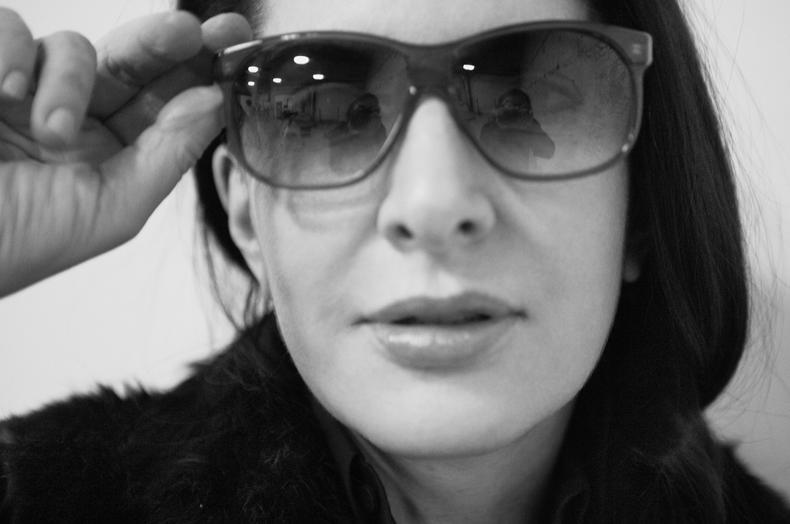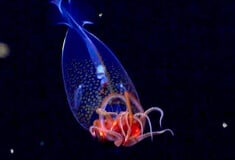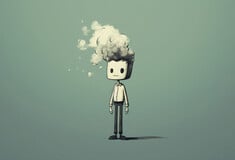Τι είπε η Αμπράμοβιτς στο περιοδικό New York όταν παρουσιάστηκε το Βalkan Erotic Epic στο Guggenheim

In 2002, the performance artist Marina Abramovic drew attention—within and beyond the art world—when she starved herself for a twelve-day endurance test, an event that gave 9/11-scarred New Yorkers something else to talk about and later found its (fictionalized) way into a Sex and the City episode. She’s also known for re-creating performance pieces by other artists, most prominently at the Guggenheim last month, where she restaged work by artists including Vito Acconci and Bruce Nauman. Her filmed piece Balkan Erotic Epic opens at the Sean Kelly Gallery on December 9. Abramovic spoke to Karen Rosenberg.
Let’s talk about the performances at the Guggenheim.
You can’t imagine how relieved I am that it’s finished—it’s something I planned for twelve years. Most of the pieces weren’t mine; I never saw them and I’d never repeated anyone else’s piece, so the responsibility to do it right was enormous. Also, I don’t rehearse, because performance art is not about rehearsal; that’s what makes it different from theater.
How did you re-create the works? You had to rely on photos, right?
I felt like an archaeologist, trying to figure out from the ruins what really happened. For the Vito Acconci piece Seedbed, I had less than three minutes of [recorded] material that wasn’t even authorized; there was no sound.
So how on earth did you—as a woman—perform that piece? In the original, he masturbated for hours while hidden beneath a ramp at the Sonnabend Gallery.
I have a lot of respect for this piece. It’s very different from my own work. He performed it for nine days, eight hours a day. The whole idea of him producing seeds, a metaphor for creation—for me it was extremely important to know what the woman is producing. I went for the idea of producing moisture and heat. Having orgasms publicly, being excited by the visitors steps above me—it’s really not easy, I tell you! I’ve never concentrated so hard in my life. My friend gave me some sexy magazines, but I really didn’t use them. I concentrated on the sounds, and on the idea that I had to have orgasms, as proof of my work. And so I did. I don’t fake it—I never fake anything. The problem for me, with this piece, was the absence of public gaze: only the sound. But I heard that people had a great time; it was like a big party up there! I ended with nine orgasms. It was terrible for the next piece—I was so exhausted!
How would your work be different if a man performed it?
I really think there’s no difference between an art piece made by a man and one made by a woman. Is it a good art piece or a bad art piece? Of course, if you’re female, you’re maybe dealing with different issues.
Do you give people permission to redo your own work?
People will often tell me when they’ve already done it; they’ll send me a letter. There are certain pieces you absolutely can’t repeat without informing me, because some of them are really dangerous, and I don’t want the responsibility. You have to see the person, see what is his capacity, what is his experience.
In your last solo show at Sean Kelly, The House With the Ocean View, you lived in the gallery without food for twelve days. Tell me about the new work, Balkan Erotic Epic.
When I made House, it was such a radical piece—pushing the limits as far as I could. After that, I just wanted to do something different. I went to the former Yugoslavia—I was interested in the roots of the culture, which has a lot of pagan elements, and the idea of the “erotic.” How we see “erotic” today is so limited; we think erotic equals pornography. The woman with her breasts exposed is a kind of erotic that’s very vulgar, very predictable, and we are fed by these very standard images. In Balkan culture, the sexual organs, male and female, were used as tools for taking evil away, connecting with the forces of nature. I found all these different rituals, going back to the sixteenth century, and staged them in a film. For instance: In the villages there would be lots of rain, which would damage the growing corn—so all the women of the village, from the very young to the very old, would run into the fields and lift their skirts to scare the gods and make the rain stop. It’s an amazing image. There’s nothing pornographic there, and it makes you see your own organs in a completely different light.


























